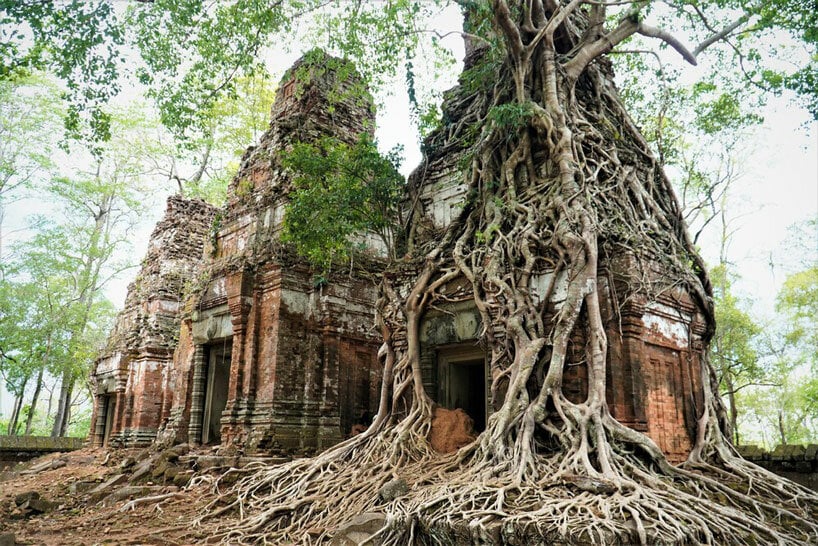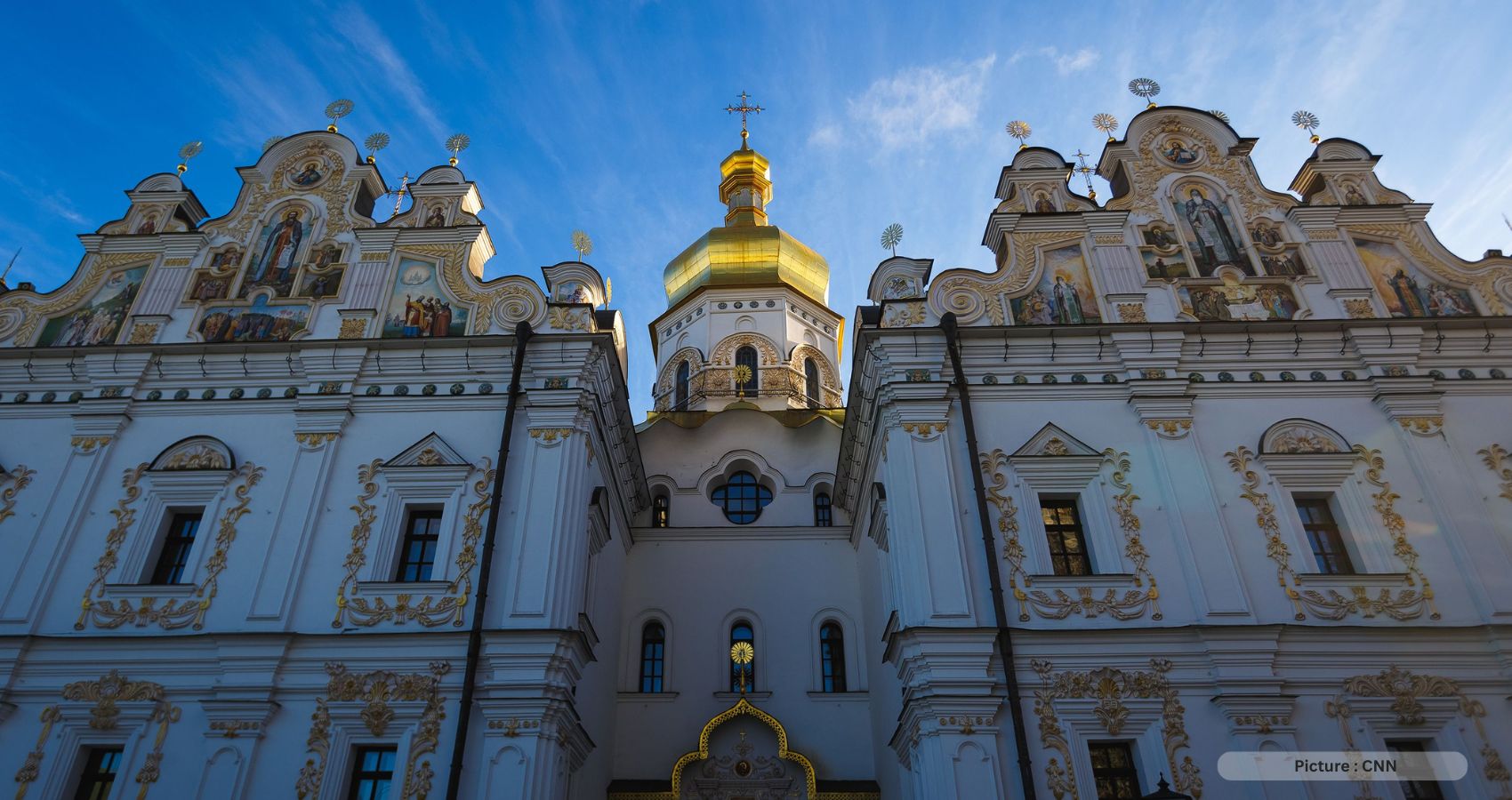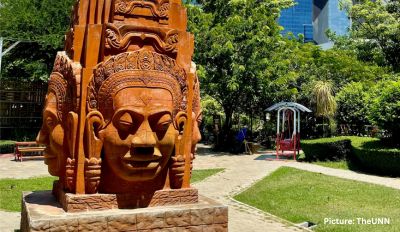Riyadh, Saudi Arabia – The 45th session of UNESCO’s World Heritage Committee, held from September 10 to 25, 2023, saw representatives from 21 member states come together to make significant additions and extensions to the World Heritage List. These decisions aim to provide legal protection to ancient and unique sites in various countries, including China, India, Ethiopia, Iran, Azerbaijan, and the Palestinian Territory of the West Bank. Additionally, several Ukrainian sites in Kyiv and Lviv have been added to the List of World Heritage in Danger. Below are details of the newly included sites:
1.Palestine – Ancient Jericho/Tell es-Sultan
Tell es-Sultan, situated in the Jordan Valley, holds evidence of human activity dating back to the 9th-8th millennium BC. The site reveals Neolithic religious practices and urban planning from the Early Bronze Age, showcasing the evolution of a complex Canaanite city-state in the Middle Bronze Age.
2.Iran (Islamic Republic of) – The Persian Caravanserai
This property encompasses 54 caravanserais, providing shelter, food, and water for travelers in ancient Iran. These caravanserais showcase diverse architectural styles, adaptations to climate, and construction materials, representing invaluable examples of Iranian heritage.
3.China – Cultural Landscape of Old Tea Forests of the Jingmai Mountain in Pu’er
Developed over a thousand years by the Blang and Dai peoples, Jingmai Mountain in southwestern China is a traditional tea production area. It features traditional villages surrounded by old tea groves, forests, and tea plantations, with Indigenous communities preserving a unique cultivation method aligned with the mountain’s ecosystem and climate.
4.Azerbaijan – Cultural Landscape of Khinalig People and Köç Yolu Transhumance Route
The Khinalig Cultural Landscape, located in northern Azerbaijan, is home to the semi-nomadic Khinalig people. Their unique culture centers around seasonal migration between summer and winter pastures along the 200-kilometer-long Köç Yolu (Migration Route), encompassing high-altitude summer pastures, agricultural terraces, and more.
5.Tajikistan, Turkmenistan, Uzbekistan – Silk Roads: Zarafshan-Karakum Corridor
The 866-kilometer-long Zarafshan-Karakum Corridor in Central Asia played a pivotal role in Silk Road trade between the East and West from the 2nd century BCE to the 16th century CE. It served as a melting pot of cultures, religions, sciences, and technologies, with people from diverse backgrounds contributing to its rich history.
6.Germany – Jewish-Medieval Heritage of Erfurt
Erfurt’s medieval historic center comprises the Old Synagogue, the Mikveh, and the Stone House, illustrating the coexistence of the local Jewish community with the Christian majority during the Middle Ages, from the 11th to the mid-14th century.
7.Denmark – Viking-Age Ring Fortresses
Built between 970 and 980 CE, these five circular forts constructed by the Vikings share a common design. Positioned near key land and sea routes, they were designed for defense and symbolize the power and centralized rule of the Jelling Dynasty in late 10th-century Denmark.
8.Canada – Tr’ondëk-Klondike
Tr’ondëk-Klondike, in northwestern Canada, witnessed how Indigenous people adapted to the profound changes brought about by the Klondike Gold Rush in the late 19th century. It showcases interactions between Indigenous communities and white settlers, as well as the adaptations made by the Tr’ondëk Hwëch’in people.
9.Republic of Korea – Gaya Tumuli
This property comprises archaeological cemetery sites with burial mounds from the Gaya Confederacy, which existed in southern Korea from the 1st to the 6th centuries CE. The unique political system and cultural evolution of the Gaya Confederacy are evident in the distribution of cemeteries, burial types, and grave goods.
10.Mongolia – Deer Stone Monuments and Related Sites of Bronze Age
These ancient deer stones, located in central Mongolia, were used for ceremonial and funerary practices from about 1200 to 600 BCE. They are often found in complexes alongside large burial mounds and sacrificial altars, reflecting the cultural heritage of Eurasian Bronze Age nomads.
11.Cambodia – Koh Ker: Archaeological Site of Ancient Lingapura or Chok Gargyar
Koh Ker in Cambodia is a sacred complex of temples, shrines, sculptures, inscriptions, and ruins. It served as one of the capitals of the Khmer Empire and showcases distinctive urban planning, artistic expression, and construction techniques.
12.Ethiopia – The Gedeo Cultural Landscape
Located on the steep slopes of the Ethiopian highlands, the Gedeo Region is characterized by agroforestry practices, sacred forests, and megalithic monuments. It highlights the rich traditional knowledge of forest management and rituals associated with the Gedeo religion.
13.India – Santiniketan
Founded by Rabindranath Tagore in 1901, Santiniketan in rural West Bengal is a boarding school and arts center rooted in ancient Indian traditions. It represents a unique approach to pan-Asian modernity, incorporating elements from across the region’s ancient, medieval, and folk traditions.
14. Latvia – Old Town of Kuldīga
Kuldīga’s old town in Latvia is a well-preserved example of a traditional urban settlement that evolved into a significant administrative center of the Duchy of Courland and Semigallia from the 16th to 18th centuries. Its architecture reflects the rich exchange between local and traveling craftsmen from the Baltic Sea region.
UNESCO’s latest additions to the World Heritage List are a testament to the cultural, historical, and natural diversity of these remarkable sites, underscoring the importance of their preservation for future generations.
UNESCO Just Added 27 New World Heritage Sites for 2023
The United Nations Educational, Scientific, and Cultural Organization (UNESCO) revealed 27 new additions to its prestigious World Heritage Site list on Monday. These newly designated sites encompass a wide array of culturally significant areas, including revered temples in Cambodia, ancient tea forests in China, and historic European towns. Moreover, the committee expanded several existing heritage sites, such as the Andrefana Dry Forests in Madagascar, Vietnam’s Cat Ba Archipelago in Ha Long Bay, and additional sections of the ancient Hyrcanian Forests in Azerbaijan.
The World Heritage Committee convened in Riyadh, Saudi Arabia, to deliberate on the selection of these sites. Committee members had to make their choices from a pool of global nominations submitted over the course of 2022 and 2023.
To earn a coveted spot on this prestigious list, a natural or cultural site must possess exceptional universal value and fulfill at least one of ten other specific criteria for selection. These criteria include representing a “masterpiece of human creative genius” or showcasing “areas of exceptional natural beauty and aesthetic importance.”
 Additionally, the recent meeting of the committee saw the addition of several Ukrainian sites to the Endangered List due to the ongoing Russian invasion in Ukraine. Notable entries on this list include Kyiv’s Saint Sophia Cathedral and its associated monastic structures, along with the historic city center of L’viv. UNESCO expressed concerns about the vulnerability of these sites to direct attacks and the collateral damage caused by bombings in these cities.
Additionally, the recent meeting of the committee saw the addition of several Ukrainian sites to the Endangered List due to the ongoing Russian invasion in Ukraine. Notable entries on this list include Kyiv’s Saint Sophia Cathedral and its associated monastic structures, along with the historic city center of L’viv. UNESCO expressed concerns about the vulnerability of these sites to direct attacks and the collateral damage caused by bombings in these cities.
The committee’s session is scheduled to continue until September 25, potentially allowing for the addition of more sites to the World Heritage roster. Here is a comprehensive list of the latest UNESCO World Heritage Sites added in 2023:
- Koh Ker archaeological site in Cambodia
- Santiniketan, West Bengal, India
- Old Tea Forests of the Jingmai Mountain in Pu’er, China
- Mongolia’s Deer Stone Monuments
- Korea’s Gaya Tumuli burial mounds
- Türkiye’s archaeological site of Gordion
- Germany’s Jewish medieval historic center of Erfurt
- Architecture of the town of Kaunas, Lithuania
- Guatemala’s National Archaeological Park Tak’alik Ab’aj
- Old town of Kuldīga, Latvia
- Prehistoric Sites of Talayotic Menorca
- The Zarafshan-Karakum Corridor of the Silk Road
- Ethiopia’s Gedeo Cultural Landscape
- Iran’s Persian Caravanserai
- Canada’s Tr’ondëk-Klondike region
- The Czech town of Žatec and its tradition of Saaz Hops
- Ancient Jericho/Tell es-Sultan
- “Köç Yolu” Transhumance Route in Azerbaijan
- Djerba in Tunisia
- India’s Sacred Ensembles of the Hoysalas
- Indonesia’s Cosmological Axis of Yogyakarta
- Bale Mountains National Park in Ethiopia
- The Forest Massif of Odzala-Kokoua in Congo
- Volcanoes and forests of Mount Pelée and pitons of Martinique
- Viking-age ring fortresses in Denmark
- The Maison Carrée of Nîmes, France
- Russia’s Astronomical Observatories of Kazan Federal University
These remarkable additions to the UNESCO World Heritage List showcase the rich tapestry of cultural and natural heritage found across the globe. Each site represents a unique facet of human history, creativity, and the natural world, underscoring their outstanding universal value for future generations.











